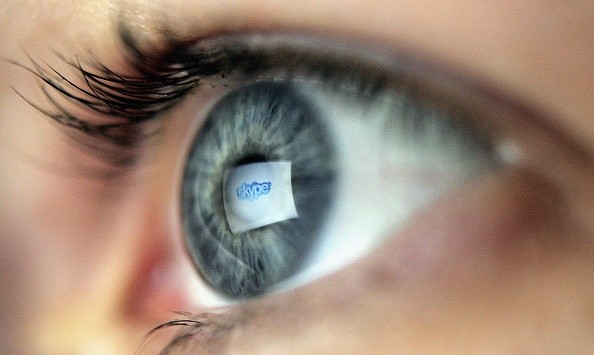Most impersonate software tools were revealed by VirusTotal, the website of the Spanish cybersecurity company Hispasec Sistemas.

(Photo : Photo Illustration by Scott Barbour/Getty Images)
In this photo illustration, the logo of the internet communications company Skype is reflected in the eye of a woman looking at a computer screen, April 13, 2006 in London, England.
"One of the most effective social engineering techniques consists of hiding malware by packaging it into installation packages with legitimate software," said the official VirusTotal blog post.
Involved cybersecurity experts stated that copying software models are now one of the most popular hacking methods since it abuses consumers' trust.
If you are among the concerned individuals, here are the top software and apps mostly copied by malware attackers.
Most Impersonated Software in Malware Attacks Include Skype?
According to Hacker News' latest report, Adobe Reader, Skype, and VLC Player are among the top software impersonated by malicious actors.

(Photo : Photo by OLIVIER DOULIERY/AFP via Getty Images)
In this photo illustration a Zoom App logo is displayed on a smartphone on March 30, 2020 in Arlington, Virginia. - The Zoom video meeting and chat app has become the wildly popular host to millions of people working and studying from home during the coronavirus outbreak. (Photo by Olivier DOULIERY / AFP)
Also Read: CloudMensis Malware Leverages Cloud Storage to Steal Documents and Spy on Mac Users
Aside from these, Microsoft Edge, Steam, Zoom, TeamViewer, CCleaner, WhatsApp, and 7-Zip are also being copied by hackers and other cybercriminals.
VirusTotal explained that the icons of these popular online tools are pretty important for hackers since the symbols allow their malware attacks to fool users completely.
Icons are not the only ones being copied by hackers. Even the domains of the popular software tools are impersonated; mediafire[.]com, disordapp[.]com, and other familiar domains.
On the other hand, stolen software certificates are also being used to make fake applications more realistic.
Spotting Fake Software, Applications
Since icons of impersonated software or applications are hard to distinguish, one of the best things you can do is to check the domain.
Commonly, fake domains will have misspelled words. If ever you find an incorrect word, then it is suggested not to open that link.
On the other hand, if software pop-up advertisements suddenly appear when you are installing Skype and other software, there's a high chance that the file itself is malware.
Another sign you should check is an alert claiming that your device is full of viruses. This alert message usually suggests installing a security tool to protect your device.
Previously, a new Joker malware-like virus was discovered affecting some Google apps.
Meanwhile, four free applications from the official Google Play Store spread the Joker malware.
For more news updates about impersonated software tools and other related cybersecurity threats, always keep your tabs open here at TechTimes.
Related Article: Hackers Shift in New Attacks Following Microsoft Office Macro Malware Block
This article is owned by TechTimes
Written by: Griffin Davis









